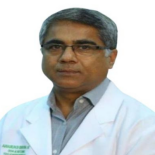About Gastroenterology and Hepatobiliary Sciences
Introduction
Gastroenterology and hepatobiliary sciences is a medical branch that deals with diagnosing, treating, and managing disorders and diseases affecting your liver, gallbladder, pancreas, and digestive system. It includes the study of the pancreas, liver, gallbladder, and digestive system. Treatment for diseases such as gastritis, hepatitis, pancreatitis, liver cirrhosis, pancreatitis cancer, and gastroesophageal reflux disease are part of this specialisation. The study of the liver and its activities is the main focus of hepatobiliary sciences.
What is gastroenterology and hepatobiliary science?
Gastroenterology is a branch of medical science focusing on the diagnosis, treatment, and prevention of disorders and diseases related to the digestive system, while hepatobiliary sciences is a medical branch that deals with the diagnosis, treatment, and management of disorders mainly affecting the liver, gallbladder, and pancreases. Gastroenterology focuses on the entire digestive system, while hepatobiliary sciences focus specifically on the liver, gallbladder, and pancreas. Gastroenterology is a subspeciality of hepatobiliary science. The other subspecialties are:
- Hepatology: It mainly deals with the diagnosis, treatment, and management of liver diseases.
- Pancreatology: It is specialised in diagnosing, managing, and treating pancreatic disorders.
- Liver transplantation: It mainly includes the surgical removal of diseased liver and replacing it with a healthy one.
Gastroenterologists and hepatologists
Gastroenterologists are medical doctors who treat disorders related to the digestive system, while hepatologists are physicians who specialise in treating the conditions of the liver, gallbladder, and pancreas. Both specialists use similar treatment methods, such as medications or endoscopy, for diagnosis. Herpetologists are more likely to deal with liver related disorders and other specialised procedures to treat liver disorders. Hepatologists diagnose and treat liver conditions, especially chronic liver disease and its complications. There may be some crossovers between liver disease and diseases in other organs. The liver is a part of the biliary tract, a system connected by bile ducts, gallbladder, and pancreas. As they are connected to one another, conditions or disorders in one organ can involve the others.
Which diseases are treated by the experts?
Hepatobiliary disease or condition is a general term for any disorder of the hepatobiliary system that impacts the normal function of the system. It ranges from minor infections, pain, or scarring to more complex serious conditions and complications. The common conditions treated by the experts are:
Viral hepatitis: It is a liver condition wherein the liver is inflamed. Inflammation is a reaction of the tissues to injury or invaders that results in swelling and pain. As the name explains, viral hepatitis is usually caused by a virus. It can be acute, which lasts for a few months, or chronic, which lasts for many months to years. Viral hepatitis is an infectious disease capable of spreading from one person to another. It is considered dangerous as it causes liver cancer, damages liver tissues, weakens the immune system, and can cause mortality. Symptoms may include abdomen pain, high coloured urine, jaundice, fever, and aching joints. There are five known hepatitis viruses:
- Hepatitis A: It does not lead to chronic infection and mostly no complications. It can be cured within few weeks. However, occasional deaths have occurred from hepatitis A infection especially in pregnancy and comorbid conditions. It can be prevented by vaccinations.
- Hepatitis B: It does lead to a chronic infection. It can be treated and cured. However, it is infectious and can spread from person to person, especially through unsafe sexual relations or in addicts. It can be prevented by vaccination.
- Hepatitis C: It is one of the most common causes of liver disease and the main reason for liver transplants. It can lead to a chronic infection. The symptoms are less likely to emerge, and there is no vaccine for this condition. It results in many complications and life-threatening conditions.
- Hepatitis D: It affects people who were previously infected by the hepatitis B virus. It can be prevented by vaccination of Hepatitis B.
- Hepatitis E: It is an infectious virus commonly transmitted from contaminated food or water. Avoiding these sources can help in the prevention from this virus.
Autoimmune hepatitis: It is a chronic liver condition caused by an error in the immune system. The immune system generate antibodies against the liver tissues, causing inflammations. These antibodies are normally supposed to attack infections in the liver tissues. It causes chronic liver inflammations, leading to serious liver damage. It results in cirrhosis (scarring of liver tissues). The symptoms include abdominal pain, swollen abdomen, skin rashes, joint pain, pale-coloured urine, jaundice, nausea, and loss of appetite. There are two main kinds of autoimmune hepatitis:
- Type 1: It is a classic and the most common type of autoimmune hepatitis. It is caused by the attack of anti-smooth muscle antibodies (ASMA) to the liver. The symptoms resemble those of systemic lupus erythematosus; hence, it is also called lupoid hepatitis.
- Type 2: It is a more serious kind of autoimmune hepatitis. It usually appears in the early stages of childhood and progresses faster than type 1. It involves anti-liver kidney microsome type 1 antibodies that target a liver protein called cytochrome P450_2D6 (CYP2D6).
Wilson’s disease: It is a genetic condition caused due to copper accumulation in the liver. Your body requires a small amount of copper from the food to remain healthy. When the copper levels are increased abnormally, it leads to organ damage, which can be life-threatening. The main cause of this disease is the mutation of the ATP7B gene. This gene is primarily responsible for removing excess copper from the body. The liver releases excess copper into the fluid, which is then stored in the gallbladder that releases bile. Bile carries copper along with toxins and waste products out of the body. In persons with Wilson’s disease, the liver releases less copper into the bile, and an excess amount of copper stays in the liver, causing this condition. As it is a genetic condition, it is passed on from parents to children through a copy of an abnormal gene from each parent. High hepatic copper levels lead to fatigue, loss of appetite, nausea, upper abdominal pain, dark-coloured urine, ascites (bloating of the abdomen), jaundice, swelling in the legs (oedema), haemolytic anaemia, and itchy skin.
Liver cirrhosis: It is a liver condition wherein a healthy liver is damaged and replaced with scared liver. It is a result of chronic hepatitis, which is liver inflammation. During inflammation, the liver heals itself by scarring. However, too much scar tissue affects the normal functioning of the liver and causes liver failure. This condition worsens as more and more scar tissue develops. Scarring in the liver blocks the blood flow and oxygen through the liver tissues. As a result, the ability of the liver to process blood and metabolise nutrients is decreased. Scar tissues of the liver compress blood vessels running through the liver, especially the portal vein system, leading to a condition called portal hypertension. The first signs of cirrhosis involve nausea, loss of appetite, fatigue, abdominal pain, spider angiomas, palmar erythema, pruritus, weight loss, hepatic, encephalopathy (confusion and mood swings), motor dysfunction, blood in vomit, shortness of breath, and low urine output.
Cholestasis: In this condition, the liver releases a decreasing amount of bile juice. The liver produces bile and delivers it to the digestive system through bile ducts. It connects the liver, gallbladder, pancreas, and small intestine. When bile flow is reduced, it affects the organs of the digestive system and begins to leak into the bloodstream, which results in toxicity. It can lead to inflammation of the liver, gallbladder, and pancreas. It leads to the malabsorption of fat-soluble vitamins, which can result in malnutrition, weight loss, and diarrhoea. It can lead to permanent liver failure. Symptoms include jaundice, abdominal pain, light-coloured faeces, and fatigue.
Bile duct cancer: It is referred to as cholangiocarcinoma, which is a rare kind of cancer caused in the bile duct. It is an aggressive cancer that spreads rapidly. The symptoms of this condition include abdominal pain, fever, fatigue, itchy skin, jaundice, dark urine, and greasy stools. It is categorised into three types:
- Intrahepatic cholangiocarcinoma: This cancer develops in the liver.
- Perihilar cholangiocarcinoma: This cancer develops in the hilum, which is a part outside the liver where the smaller bile ducts from inside the liver merge to form a larger duct called the common hepatic duct. This condition is also called klatskin tumour.
- Distal cholangiocarcinoma: This cancer develops outside the liver in the ducts closer to the small intestine.
Diagnostic techniques used by the experts
Experts use many diagnostic techniques to diagnose the condition of the disease and its causes and to plan treatments accordingly. Some of them are:
- Laboratory tests: They include blood and urine tests to measure liver enzymes, bilirubin levels, and coagulation function.
- Imaging techniques: Techniques such as ultrasound examination, CT scans, MRI scans, and ERCP are used to visualise the inner conditions of the liver, gallbladder, and pancreas, along with bile ducts.
- Biopsy: It is a procedure of removing smaller tissues or cells from the affected organ like the liver, pancreas, or gallbladder for microscopic examinations.
Treatments
Several treatments are available for the conditions of the liver and the digestive system.
- Medications: Antiviral medications are commonly used to treat viral hepatitis. Anti-inflammatory drugs, pain relievers, and immunosuppressant agents are used for several conditions.
- Interventional procedures: These are the non-surgical procedures, like ERCP, used to remove gallstones from bile ducts.
- Surgery: It is a surgical procedure more often used to remove a tumour and repair a damaged bile duct. It is used in the case of liver cancer and bile duct cancer.
- Chemoembolisation: It is a treatment used to treat liver cancer, which involves injecting chemotherapy drugs directly into the tumours.
- Immunosuppressant therapy: This procedure is used to treat autoimmune liver disease.
- Radiation therapy: It is used to kill cancerous cells using high-energy radiation.
Benefits of the early detection of hepatobiliary issues
- Better treatment outcomes: Early detection of hepatobiliary issues can help in better treatment results, resulting in a higher response rate, fewer complications, and higher survival rates.
- Reduced morbidity: Early treatments can decrease the death rates due to the disease and help manage the disease.
- Cost-effective treatments: Early detection leads to fewer complications of the disease and the requirement of simple treatments, leading to lesser treatment costs.
What should you expect when consulting a hepatobiliary expert?
While consulting a hepatobiliary expert, carry the medical records, medical history records, test results, and the prescription of medications if you are taking pills. Notice all the symptoms that you are suffering from correctly, including when they started, how long they lasted, and what triggered them. Be prepared to share the family history, which will be asked by them in some conditions like Wilson’s disease and live cancer. While consulting, always be open and honest with the doctors to get the right treatment.
During the consultation, the doctors will usually:
- Ask for medical history
- Performs physical examination
- Perform symptom analyses
- Order diagnostic tests
After the consultations, the doctors guide you with:
- Treatment plans
- Medications
- Lifestyle adaption
- Follow up appointments
Conclusion
Gastroenterology and hepatobiliary sciences mainly focus on treating the conditions and disorders related to the digestive system. It also focuses on research to understand the pathophysiology of GI disease, develop new diagnostic biomarkers and therapeutic targets, and finally help you improve the quality of life through personalised medicines and minimally invasive treatments.
Our Team of Experts
View allRelated Specialities
Other Specialities
-
Explore Hospitals for
Fortis Cancer Institute, Defence Colony, New Delhi Fortis Memorial Research Institute, Gurgaon Fortis CDOC, Chirag Enclave, New Delhi Fortis Escorts Heart Institute, New Delhi Fortis Flt. Lt. Rajan Dhall Hospital, Vasant Kunj, New Delhi Fortis La Femme, Greater Kailash II, New Delhi Fortis Escorts Hospital, Faridabad Fortis Hospital, Noida Fortis Hospital, Shalimar Bagh, New Delhi Fortis Escorts Hospital, Amritsar Fortis Hospital, Mohali Fortis Escorts Hospital, Jaipur Fortis Hospital, Anandpur, Kolkata Fortis Hospital CG Road Bangalore Fortis Hospital - Greater Noida Fortis Hospital & Kidney Institute, Gariahat, Kolkata Fortis Hospital BG Road Bangalore Fortis Nagarbhavi Bangalore Fortis Hospital, Rajajinagar, Bengaluru Fortis Hospital, Richmond Road, Bengaluru Hiranandani Fortis Hospital, Vashi, Mumbai Fortis Hospital, Mulund, Mumbai Fortis Hospital, Kalyan, Mumbai Fortis Hospital, Ludhiana S L Raheja Hospital, Mumbai Fortis Hospital Mall Road, Ludhiana Fortis Hospital,Manesar,Gurugram -
Explore Doctors for by Hospital
Doctors in Fortis Cancer Institute, Defence Colony, New Delhi Doctors in Fortis Memorial Research Institute, Gurgaon Doctors in Fortis CDOC, Chirag Enclave, New Delhi Doctors in Fortis Escorts Heart Institute, New Delhi Doctors in Fortis Flt. Lt. Rajan Dhall Hospital, Vasant Kunj, New Delhi Doctors in Fortis La Femme, Greater Kailash II, New Delhi Doctors in Fortis Escorts Hospital, Faridabad Doctors in Fortis Hospital, Noida Doctors in Fortis Hospital, Shalimar Bagh, New Delhi Doctors in Fortis Escorts Hospital, Amritsar Doctors in Fortis Hospital, Mohali Doctors in Fortis Escorts Hospital, Jaipur Doctors in Fortis Hospital, Anandpur, Kolkata Doctors in Fortis Hospital CG Road Bangalore Doctors in Fortis Hospital - Greater Noida Doctors in Fortis Hospital & Kidney Institute, Gariahat, Kolkata Doctors in Fortis Hospital BG Road Bangalore Doctors in Fortis Nagarbhavi Bangalore Doctors in Fortis Hospital, Rajajinagar, Bengaluru Doctors in Fortis Hospital, Richmond Road, Bengaluru Doctors in Hiranandani Fortis Hospital, Vashi, Mumbai Doctors in Fortis Hospital, Mulund, Mumbai Doctors in Fortis Hospital, Kalyan, Mumbai Doctors in Fortis Hospital, Ludhiana Doctors in S L Raheja Hospital, Mumbai Doctors in Fortis Hospital Mall Road, Ludhiana Doctors in Fortis Hospital,Manesar,Gurugram






















